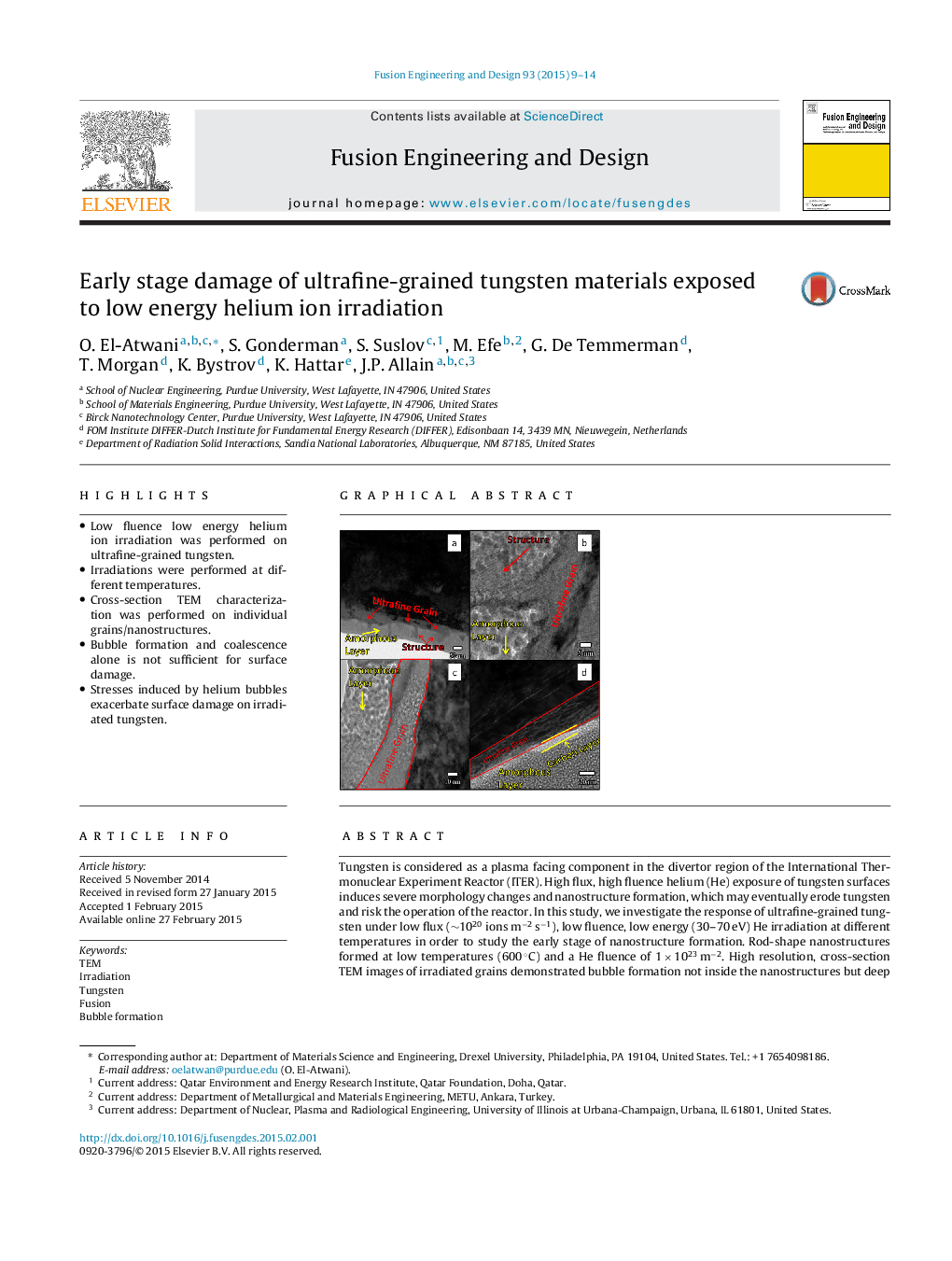| Article ID | Journal | Published Year | Pages | File Type |
|---|---|---|---|---|
| 270980 | Fusion Engineering and Design | 2015 | 6 Pages |
•Low fluence low energy helium ion irradiation was performed on ultrafine-grained tungsten.•Irradiations were performed at different temperatures.•Cross-section TEM characterization was performed on individual grains/nanostructures.•Bubble formation and coalescence alone is not sufficient for surface damage.•Stresses induced by helium bubbles exacerbate surface damage on irradiated tungsten.
Tungsten is considered as a plasma facing component in the divertor region of the International Thermonuclear Experiment Reactor (ITER). High flux, high fluence helium (He) exposure of tungsten surfaces induces severe morphology changes and nanostructure formation, which may eventually erode tungsten and risk the operation of the reactor. In this study, we investigate the response of ultrafine-grained tungsten under low flux (∼1020 ions m−2 s−1), low fluence, low energy (30–70 eV) He irradiation at different temperatures in order to study the early stage of nanostructure formation. Rod-shape nanostructures formed at low temperatures (600 °C) and a He fluence of 1 × 1023 m−2. High resolution, cross-section TEM images of irradiated grains demonstrated bubble formation not inside the nanostructures but deep inside the grains. At higher temperatures (900 °C) and the same fluence of 1 × 1023 m−2, large tungsten asperities (stone-shape and fiber-form structures), which are attributed to the burst and erosion of the surface grains. Moreover, low fluence (1020 m−2–1021 m−2) and high temperature (900 °C) irradiation demonstrated low density of non-coalesced bubbles inside the TEM samples. The results suggest that morphology changes can exist in He irradiated tungsten even with low bubble densities; thus, an additional factor such as surface stresses may dictate the observed nanostructure formation.
Graphical abstractFigure optionsDownload full-size imageDownload as PowerPoint slide
